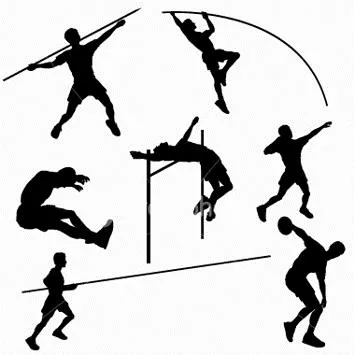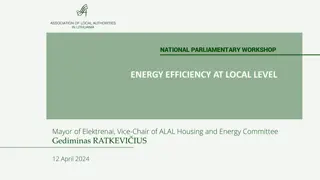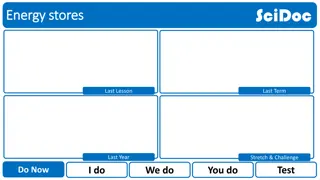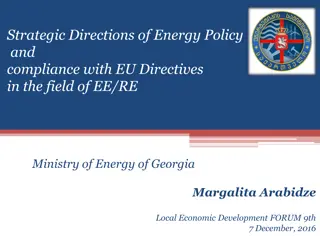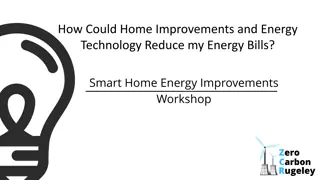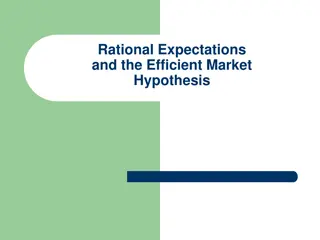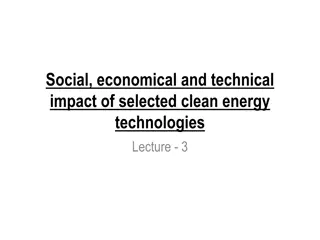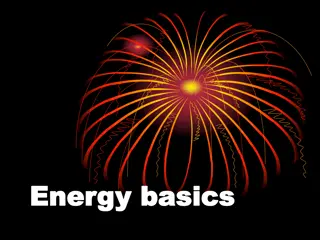Innovative Learning Opportunities for High Expectations in Energy Studies
Engage in remote learning on snow days to explore energy conversion, kinetic and potential energy, equations solving, and more. Various topics covered through interactive presentations and assessments. Stay connected through email for assignments submission and questions. Embrace differentiated learning experiences and delve into the exciting world of energy studies from home.
Download Presentation

Please find below an Image/Link to download the presentation.
The content on the website is provided AS IS for your information and personal use only. It may not be sold, licensed, or shared on other websites without obtaining consent from the author. Download presentation by click this link. If you encounter any issues during the download, it is possible that the publisher has removed the file from their server.
E N D
Presentation Transcript
A.1. Knows High Expectations Snow Day Materials: pencils and paper 1 Purpose: To allow students to continue learning from the home via technology. Instructions: Email completed assignments and questions to steven.scudder@Christian.kyschools.us from 8-11 AM and 12-3 PM on snow days. 1. Read and interact with the slide presentation. 2. Complete the bell ringer and exit question by providing the gradecam number/letter choice (1. A, 2. B) the same as in class. 3. Answer the formative assessment questions. Example: Lab 1. The candle consumes O2. Energy conversion 1. PE stands for potential energy. 2. KE stands for kinetic energy.
A.1. Knows High Expectations Purpose & Life Connection Materials: pencils and paper No Pass 2 Purpose: To solve equations that equate initial energy to final energy. Hook: A pole-vaulter converts kinetic energy into potential energy in order to propel themselves high into the air. At no time did the pole-vaulter s mechanical energy ever increase. However, the potential and kinetic energy levels were constantly changing.
E.1. Individual Progress/Learning Flashback/Formative Materials: pencils and paper No Pass 1. Where does the kinetic energy of the pendulum bob in the above figure increase the most? a. between locations A and B b. between locations A and C c. between locations B and D d. between locations C and D 3
No Pass B.1. Knows High Expectations Bell Ringer Materials: pencils and paper Target: I will solve equations that equate initial energy to final energy. 3.What does the mechanical energy of an object equal? a. chemical energy plus its nuclear energy. b. The kinetic energy plus its potential energy. c. nuclear energy. d. thermal energy. 4
B.5. Higher Order Thinking Unit Learning Map No Electronic Devices Pass Energy Is about The continuously changing of energy from one form to another and is classified by location or motion. Described by 2. Thermal Energy & Matter I. Energy Conversion & Conservation 3. Thermodynamics 2nd law 4. Using Heat Understood through 5 Mechanical Energy Formula
A.1. Differentiated Learning Opportunities Agenda No Pass DI: Energy Conversion Calculations (20 min) Act: Data interpretation (20 min) 1. 2. Notes 1. What is your career pathway at CCHS? 2. CCHS Mission Statement 1. Provide safe learning environment 2. Successful students who are 1. College ready 2. Career ready 3. Good citizens 6
A.4. Cultural Time-Out 1 Reads, 3 Share Out Pass C2 =3R 7 Colonel Climate = Respect, Restraint, Responsibility
B.5. Higher Order Thinking DI: Energy Conversion Calculations No Electronic Devices Pass Mechanical energy is the total kinetic and potential energy of an object. ME = KE + PE *Friction is ignored Conservation of Mechanical Energy (KE + PE) beginning = (KE + PE) end Calculating Kinetic Energy; KE = 1/2mv2 (m = mass, v = velocity), final answer is in joules (J) Calculating Potential Energy: PE = mgh (m = mass, g = gravity (9.8 m/s2), h = height), final answer is in joules (J) Three step method to solve problems dealing with conservation of energy. 1. 2. 3. 4. 5. 1. Read and understand (what information are you given?) 2. Plan and solve (What formulas contain given values?) 3. Look back and check (Is your answer reasonable?) 8
B.5. Higher Order Thinking DI: Energy Conversion Calculations No Electronic Devices Pass 9
B.5. Higher Order Thinking DI: Energy Conversion Calculations No Electronic Devices Pass Assessment: Formative (1-knowledge, 2-Skill) What is the first step to solving a problem dealing with conservation of mechanical energy? A 1.0 kg brick is dropped from rest and hits the ground at a speed of 5.0 m/s. Ignoring air resistance, calculate the gravitational potential energy of the brick before it was dropped. 10
B.5. Higher Order Thinking DI: Energy Conversion No Electronic Devices No Pass Energy Conversions & Conservation Understood through 1. ME = KE + PE 2. KE = mv2 3. PE = mgh 11
B.5. Higher Order Thinking No Pass DI: Gravitational Potential Energy No Electronic Devices 12 The gravitational potential energy of an object is converted to the kinetic energy of motion as the object falls. Kinetic and potential energy undergo constant conversion as a pendulum swings. At the highest point in its swing the pendulum has its greatest PE at near the lowest point the greatest KE. As the pendulum swings downward PE is converted into KE As the pendulum swing upward KE is converted into PE as the height increases 1. 2. 3. 4. 5.
B.5. Higher Order Thinking No Pass DI: Gravitational Potential Energy No Electronic Devices 13
B.5. Higher Order Thinking No Pass DI: Gravitational Potential Energy No Electronic Devices 14
B.5. Higher Order Thinking No Pass DI: Gravitational Potential Energy No Electronic Devices 15 Assessment: Formative Identify at what points is the PE and KE equal to zero during the swinging of a pendulum. Explain when PE and KE are at their greatest values during the swinging of a pendulum. 1. 2.
A.1. Differentiated Learning Practice: Energy Conversion & Conservation Purpose: To make notes (N7)(RST9- 10.1 & 9-10.2) 1. Turn green titles into questions 2. Copy blue titles 3. Use keys, highlighted, and bold print for quotes 4. Write a paraphrased understanding of quoted material Pass 16
A.1. Differentiated Learning Practice: Energy Conversion Pass 17 Assessment: Formative 1. Explain how energy conversions work in pendulums. 2. Explain energy conversion in the pole vault.
A.1. Differentiated Learning Practice: Energy Conversion & Conservation Purpose: To interpret data 1. Read the data table and answer questions about the conversion (changes) in energy from PE to KE 2. Complete all 3 questions with a partner Pass 18
E.1. Individual Progress/Learning Exit Question/Formative 4. At what point does a pole-vaulter have the most gravitational potential energy? a. At the bottom of the arc. b. The top point of the arc where they are at the highest point off the ground. c. The middle point because they have an equal amount of height and speed. d. After they clear the bar and begin to travel downward. No Pass 19













